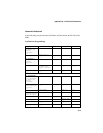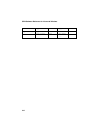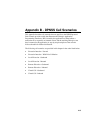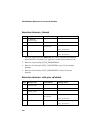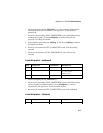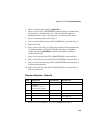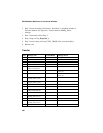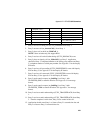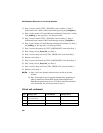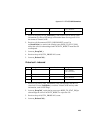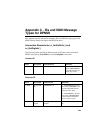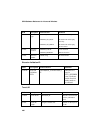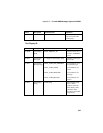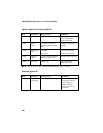
Appendix B - DPNSS Call Scenarios
421
18
cc_DropCall( ) (CRN 1)
-->
19 <-- CCEV_DROPCALL (CRN 1)
20
cc_ReleaseCall( ) (CRN 1)
-->
21 <-- CCEV_DISCONNECT (CRN 2)
22
cc_DropCall( ) (CRN 2)
-->
23 <-- CCEV_DROPCALL (CRN 2)
24
cc_ReleaseCall( ) (CRN 2)
-->
1. Party 2 receives incoming call (CCEV_OFFERED) from Party 1.
2. Party 2 answers call (cc_AnswerCall( )) from Party 1.
3. Party 2 places call on hold (cc_HoldCall( )).
NOTE: Some switches may not support Hold.
4. Party 2 receives call on hold acknowledge (CCEV_HOLDACK) event.
5. Party 2 places an inquiry call (cc_MakeCall( )) to Party 3. Application
should use Party 1’s telephone number as the calling party number and Party
3’s telephone number as called party number. See Appendix C for the Inquiry
IE format.
6. Party 2 receives call proceeding (CCEV_PROCEEDING) event with Inquiry
IE from Party 3. See Appendix C for the Inquiry IE format.
7. Party 2 receives call connected (CCEV_CONNECTED) event with Inquiry
IE from Party 3. See Appendix C for the Inquiry IE format.
8. Party 2 sends transfer request (cc_SndMsg( )) to Party 1 with
TRANSFER_ORIG as transfer direction. See Appendix C for message
format.
9. Party 2 sends transfer request (cc_SndMsg( )) to Party 3 with
TRANSFER_TERM as transfer direction. See Appendix C for message
format.
10. Party 2 receives transfer acknowledge (CCEV_TRANSFERACK) from Party
1.
11. Party 2 receives transfer acknowledge (CCEV_TRANSFERACK) from Party
3. Transfer completed. At this time, Party 2 loses control of the call.
12. Application should cause Party 1 to listen to Party 2’s transmit time slot and
Party 2 to listen to Party 1’s transmit time slot.



